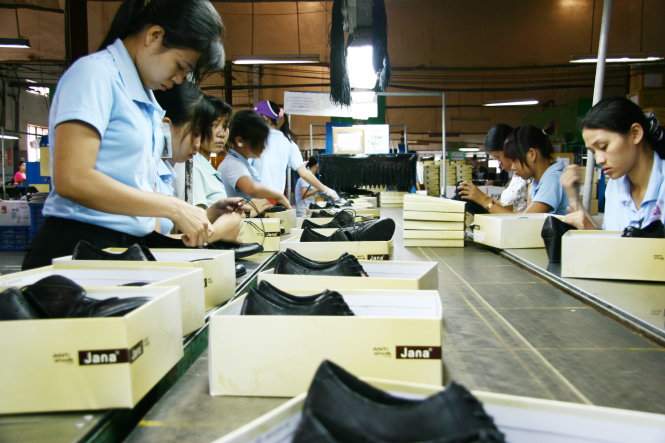Vietnam’s long-term growth as a leading shoe exporter is forecast to come at the expense of job losses for up to 15 percent of the industry’s laborers because of automated machinery.
The country exported over one billion pairs of shoes in 2017, accounting for 7.4 percent of shoe exports worldwide, according to statistics released by the Vietnam Leather, Footwear and Handbag Association (Lefaso).
Vietnam is the world’s third-largest producer and second-largest exporter of shoes globally, Lefaso’s deputy chairman Diep Thanh Kiet said on Wednesday at the opening of a two-day footwear summit in Ho Chi Minh City.
By 2030, the country’s shoe industry is expected to locally source 60 percent of its demand for leather thanks to foreign direct investment (FDI) from Italy and South Korea, Kiet said.
Vietnam is forecast to continue to cement its foothold as the world’s leading shoe producer for at least the next 20 years, he added, pointing to a positive market outlook for foreign brands in Vietnam.
However, experts have warned that the steady growth of Vietnam’s leather and shoe industry could lead to increased automation in different production phases, putting low-level workers at risk of job loss.
About 10-15 percent of human workforce in the industry is forecast to be laid off as a result, Kiet said, as companies move toward employing automated machinery to carry out repetitive tasks with much higher accuracy and efficiency.
 |
| Workers inspect leather shoes before boxing for export at a factory in Vietnam. Photo: Tuoi Tre |
Vietnam’s free trade agreements with major markets like Japan, Russia, Kazakhstan, Belarus, South Korea, and Southeast Asia are an assurance that local shoe exporters will continue to grow in the face of dropping global demand for leather footwear, the Lefaso deputy chairman said.
The Comprehensive and Progressive Agreement for Trans-Pacific Partnership (CPTPP), an 11-country trade pact of which Vietnam is a signatory, will open the door to a market of over 500 million people, he added.
The agreement sets the course for custom duties on 95 percent of trade in goods, including footwear, among CPTPP members to be gradually reduced to zero in the long run.
There are 939 enterprises operating within the footwear industry in Vietnam.
The U.S. was the largest importer of Vietnamese footwear and bags in 2017, accounting for 35.9 percent of the country’s exports.
It was followed by the European Union (30.6 percent), China (6.4 percent), Japan (6.3 percent), and South Korea (2.8 percent).
Like us on Facebook or follow us on Twitter to get the latest news about Vietnam!


















































